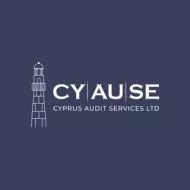- within International Law topic(s)
- with readers working within the Media & Information and Securities & Investment industries
- within International Law, Wealth Management and Immigration topic(s)
Introduction
In today's complex regulatory environment, businesses engaging in international trade must navigate a wide array of compliance requirements.
Among the most critical of these are the TARIC system and the rules governing dual-use goods under the EU Dual-Use Regulation.
For service providers, law firms, and professional advisors, understanding these systems is essential not only from a trade perspective, but also as part of our broader AML (Anti-Money Laundering) and sanctions compliance framework.
What is the TARIC System?
TARIC (Integrated Tariff of the European Communities) is the EU's centralized database containing all measures applicable to specific goods imported or exported from the EU. It allows companies and authorities to verify customs duties, import/export restrictions, prohibitions, or sanctions affecting particular products.
TARIC serves as a central reference for:
- Identifying the correct tariff classification for goods;
- Checking applicable customs duties and taxes;
- Understanding import and export restrictions (e.g. quotas, licensing, bans);
- Complying with EU Trade regulations and agreements.
Every product imported or exported must be classified under a CN/HS code, which is then cross-referenced in TARIC to determine:
- Customs duties and tariffs.
- Import/export licensing requirements.
- Prohibitions or restrictions (e.g. for sanctioned goods).
- Documentation obligations (e.g. under the EU Deforestation Regulation for paper/wood products).
In practice, TARIC is the starting point for ensuring that goods move lawfully across borders without regulatory or compliance risk.
What Are Dual-Use Goods?
Dual-use goods are items, software, or technologies that can be used for both civilian and military purposes.
The EU regulates these through Regulation (EU) 2021/821, which contains a detailed Annex I list updated regularly and required an export license for controlled goods or technologies.
Examples of dual-use goods include:
- Advanced electronics components and semiconductors.
- Telecommunications and encryption software.
- Certain chemicals and materials that could be used for weapons manufacture.
- Navigation or night-vision equipment (drones, etc.)
Not all goods are dual-use, but the only way to be certain is to classify them and check against Annex I.
Who is responsible for these checks: the client or the service provider?
Both share responsibility:
- Clients must disclose full and accurate information about the goods and transactions.
- Service providers (accounting, audit, compliance firms) must screen clients' activities and perform due diligence under AML and ICPAC directives.
Why Are These Checks Important for AML Compliance?
From an AML and sanctions perspective, conducting TARIC and dual-use checks ensures that:
- The products involved in a transaction are not prohibited or restricted by EU or international sanctions.
- No license is required for export or import without being obtained first.
- Clients are not indirectly involved in sanctions evasion, proliferation financing, or high-risk trade flows.
These checks can reveal:
- Goods that are explicitly sanctioned (e.g. certain technologies when trading with Russia/Belarus).
- Goods subject to restrictions or licensing (e.g. chemicals or advanced electronics).
- Goods requiring additional compliance documentation (e.g. paper/wood imports under the EU Deforestation Regulation).
By integrating these checks, forms part of a risk-based approach, under both the EU AMLD6 and ICPAC AML Directives, helping firms to:
- understand whether goods are restricted or dual-use and helps to prevent money laundering, terrorist financing and sanctions evasion; and
- demonstrate a robust AML compliance culture, as required by EU Directives, ICPAC guidance, and national AML laws.
What if the client refuses to
provide information about its counterparties or
goods?
Under the AML Directives and ICPAC requirements, lack of transparency from a client triggers enhanced due diligence. The service provider must evaluate the risk and decide whether to continue or terminate the business relationship, documenting the decision in the MLCO file.
What Information Must Clients Provide?
In order to perform accurate TARIC and dual-use checks, clients must provide clear, detailed product and transaction information, including:
- Exact product details (description and technical specifications): trade/chemical name, CAS number, technical datasheet (MSDS).
- Customs classification (tariff code – CN code): CN/HS code (8-digit EU or 10-digit TARIC subheading).
- Trade details: country of origin, country of export, destination country, and intended end-use.
- Purpose of Use (e.g. commercial research, resale).
- Counterparty details: suppliers, buyers, intermediaries (names, addresses, company registrations).
- Supporting documents: invoices, contracts, purchase orders, and for wood/paper products, due diligence statements, waybills/shipping documents, purchase agreements.
Without this information, compliance checks cannot be completed effectively.
When Should a Company Check the Taric System?
Taric Checks by the service provider should be carried out:
- At client onboarding (to understand the nature of business and risk profile);
- Before each new international transaction, import, or export involving goods to or from the EU, especially when dealing with high-risk jurisdictions or sanctioned countries, trading in raw materials, machinery, technology, or software, or when assisting clients engaged in cross border trade where goods classification affects compliance or taxation.
- On a continuous monitoring basis, as product lists and sanctions regimes evolve frequently.
What are common red flags that should trigger additional investigation?
- The client cannot clearly describe the product or its end-use.
- The goods involve high-risk jurisdictions (e.g., sanctioned or embargoed countries).
- Transactions routed through third countries unrelated to the business purpose.
- Unusual shipment routes or requests for "urgent"
exports of technical goods.
These require escalation to the MLCO and possible reporting to MOKAS if suspicion persists.
What are the penalties for breaching export control or sanctions regulations?
Breaches can result in:
- Severe financial penalties,
- Loss of export privileges, and
- Criminal prosecution in serious
cases.
Cyprus, as an EU Member State, enforces EU sanctions and export control laws directly.
Conclusion
The TARIC system and the dual-use goods regulation are not just technical trade matters, they are a vital part of an organization's AML, sanctions, and compliance obligations.
By collecting the right information from clients and running systematic checks, firms can protect themselves and their clients from severe legal, financial, and reputational risks.
Frequently asked Questions (FAQs)
1.How often should dual-use or TARIC checks be performed for existing clients?
Checks should be performed at onboarding and periodically thereafter, especially when:
- The client introduces new products or technologies.
- The client starts trading with new countries.
- EU or UN sanctions lists are updated.
Best practice under ICPAC and EU AML guidance is to include annual or ad-hoc checks as part of the firm's ongoing monitoring program.
2.Are service providers legally required to perform TARIC checks themselves?
No. The legal obligation to comply with export control
regulations rests primarily with the exporter or
manufacturer.
However, under AML and professional conduct rules, service
providers must take reasonable measures to ensure their
clients' activities are not in breach of sanctions or export
controls.
This makes TARIC and dual-use screening a prudent due diligence
step, even if not strictly mandatory.
3.What is the difference between "controlled goods" and "prohibited goods"?
- Controlled goods can be traded only with a license or authorization (e.g., encryption software, high-precision tools).
- Prohibited goods cannot be traded under any circumstances
(e.g., arms embargo items, goods listed in EU restrictive
measures).
TARIC will clearly identify whether a license or total prohibition applies.
4.How can I check if a product is restricted or sanctioned?
By visiting the EU TARIC Database (https://ec.europa.eu/taxation_customs/dds2/taric), entering the product's Customs / CN code, and reviewing any attached restrictions, prohibitions, or licensing requirements.
If the product appears in the Dual-Use List (Annex I of Regulation
2021/821), an export license may be required.
5.If a product is not listed in TARIC, does that mean it is automatically allowed?
Not necessarily. While TARIC is comprehensive, some products may
fall under catch-all controls or sector-specific restrictions not
yet integrated into the system.
Always cross-check with:
- EU Sanctions Map,
- EU Dual-Use Regulation 2021/821 Annexes, and
- National Customs notices issued by Cyprus authoritie
6.What if I am unsure whether a product is controlled or dual-use?
If uncertainty exists, consult the Cyprus Department of Customs and Excise, or request an official classification ruling. Alternatively, your firm's MLCO can escalate the matter for legal or regulatory review.
7.How does the TARIC system relate to EU sanctions or embargoes?
TARIC integrates sanctions and restrictive measures at the product code level. If a product is linked to a country subject to EU or UN sanctions, TARIC will display relevant prohibitions or licensing requirements. This makes it a practical first line of defence for sanctions screening at the goods level.
8.What is a CN (Combined Nomenclature) or TARIC code and who assigns it?
A CN code (8 digits) or TARIC code (10 digits) classifies goods for customs and trade purposes. The code is usually assigned by the manufacturer, exporter, or customs broker based on the technical specifications of the product. Service providers can request this code from clients to facilitate proper screening.
9.What are "Annex I" and "Annex IV" in the EU Dual-Use Regulation?
- Annex I lists all controlled dual-use items.
- Annex IV contains particularly sensitive items
that require a license even for intra-EU transfers.
Clients dealing in goods appearing in these annexes must obtain licenses from the Cyprus Department of Customs and Excise before export.
10.How does dual-use compliance connect to AML and sanctions obligations?
Trading in restricted or military-linked goods with sanctioned
jurisdictions may indicate terrorist financing, proliferation
financing, or sanctions evasion risks.
Therefore, MLCOs should:
- include TARIC/dual-use checks in their risk assessment frameworks,
- ensure enhanced due diligence for relevant clients, and
- document the rationale for continuing or declining the business relationship.
11.What happens if a product is found to be dual-use or restricted?
If a product is dual-use, the exporter must apply for a license from the competent national authority (in Cyprus: Department of Customs and Excise). If the product is prohibited or sanctioned, the transaction must not proceed unless explicit authorization is granted.
12.How can firms document TARIC and dual-use checks for audit or regulatory purposes?
Keep a TARIC & Dual-Use Log showing:
- Date of check
- Product / CN code
- Source or URL of search
- Summary of findings
- MLCO or Compliance Officer's signature
Attach this as evidence to the client's AML file and retain it for 5 years (or 10 years for high-risk clients).
13.Where can I find the official sources to perform these checks?
- EU TARIC Database: https://ec.europa.eu/taxation_customs/dds2/taric
- EU Sanctions Map: https://www.sanctionsmap.eu
- EU Dual-Use Regulation (2021/821): https://eur-lex.europa.eu/legal-content/EN/TXT/?uri=CELEX%3A32021R0821
- Cyprus Customs & Excise Department: https://www.mof.gov.cy/customs
The content of this article is intended to provide a general guide to the subject matter. Specialist advice should be sought about your specific circumstances.


